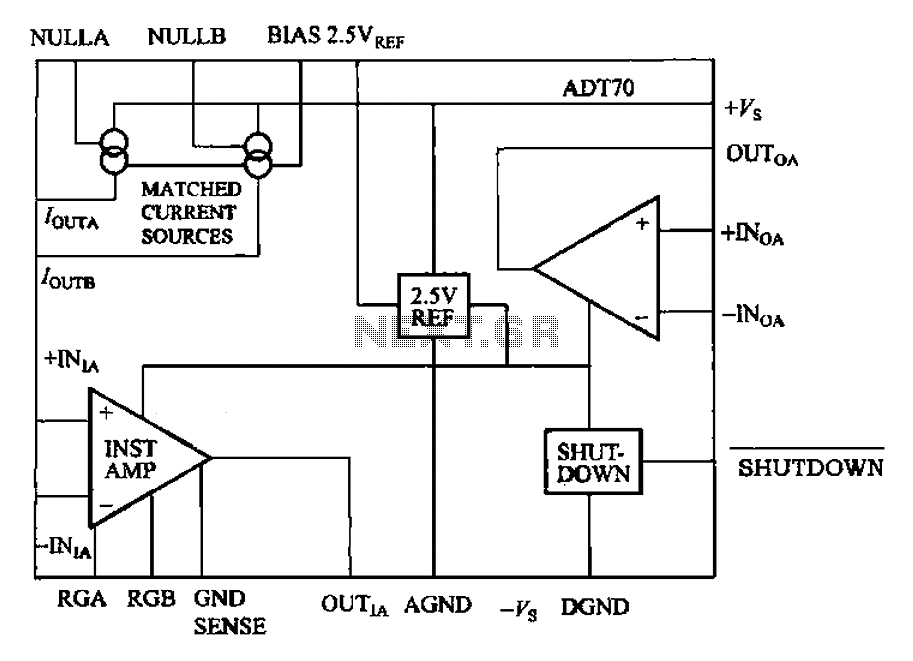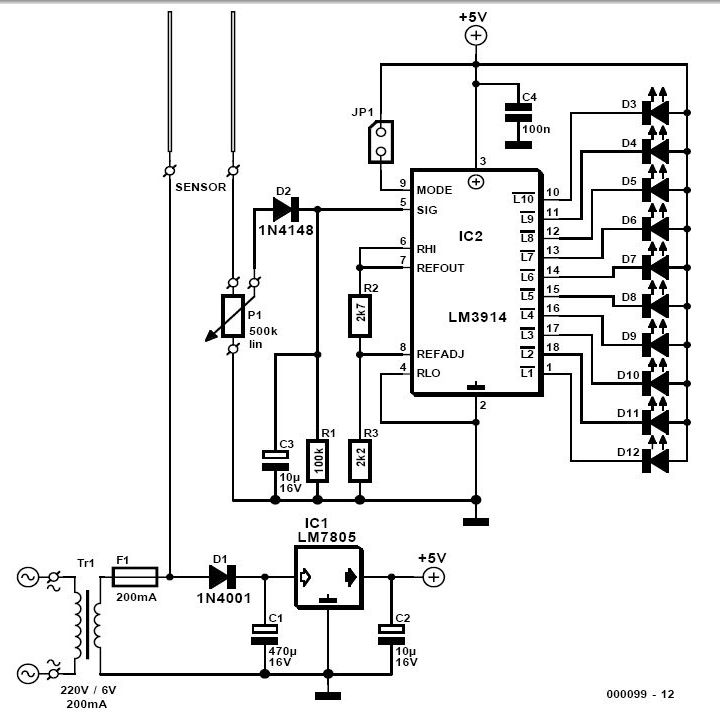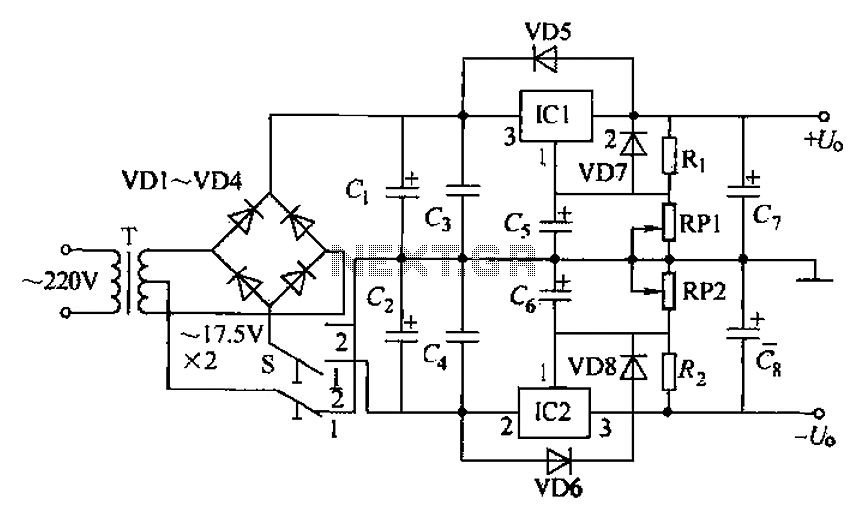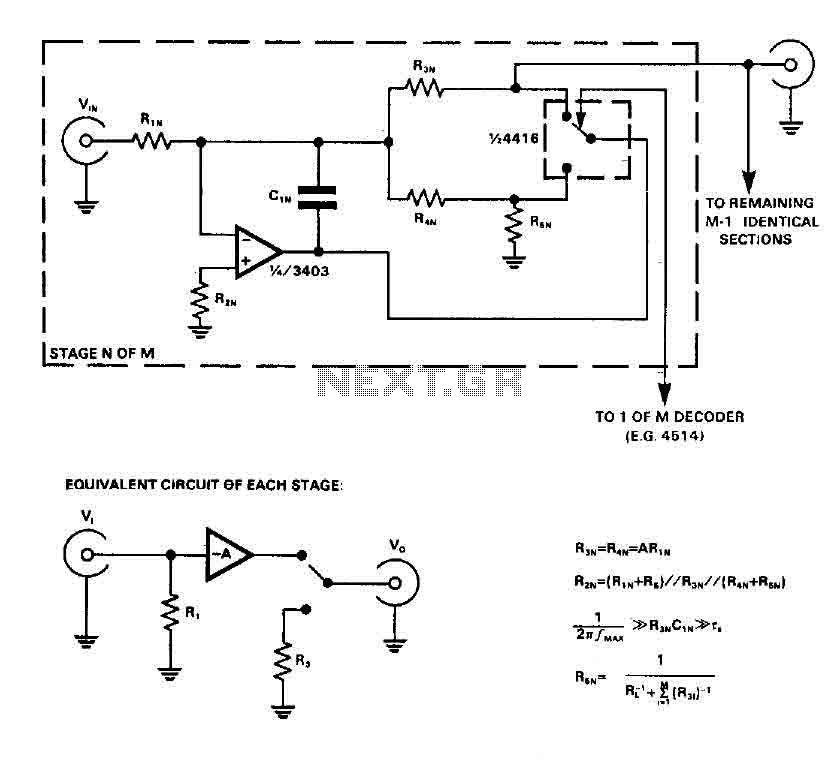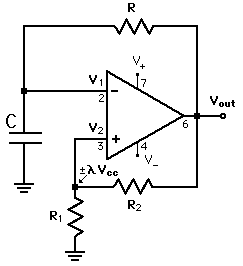
Ring current generator circuit diagram
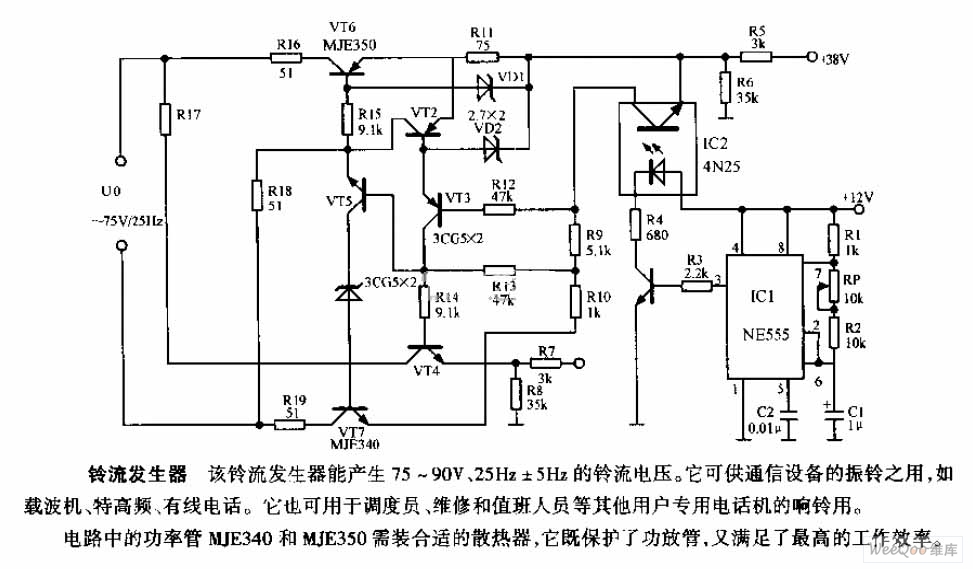
The ring current generator can produce a ringing current voltage of 75-90V and 25Hz ± 5Hz. It is suitable for use in vibrating rings in communication devices, such as carriers, ultrahigh frequency systems, and wire telephones. Additionally, it can be employed as a ring in specialized telephones for dispatchers, repair technicians, operators on duty, and other users.
The ring current generator is a critical component in various telecommunication applications, providing the necessary signaling voltage to alert users of incoming calls or messages. Its operational voltage range of 75-90V ensures compatibility with standard telephone systems while maintaining safety and efficiency. The frequency of 25Hz ± 5Hz is specifically designed to produce an audible ringing tone that can be perceived clearly by users, allowing for effective communication in both personal and professional settings.
In terms of design, the generator typically consists of a transformer to step up the voltage, along with a series of capacitors and resistors to filter and stabilize the output waveform. The inclusion of a rectifier circuit may also be present to convert any AC signals into a suitable format for specific applications. The generator's circuitry must be robust to handle the varying loads presented by different communication devices, ensuring consistent performance across a range of operating conditions.
Furthermore, the generator's application in specialized telephones for dispatchers and repair personnel highlights its versatility. These telephones often require distinct signaling features to accommodate the fast-paced nature of their work environments. By integrating the ring current generator into such devices, manufacturers can enhance the reliability and efficiency of communication systems, ultimately improving response times and operational effectiveness.
Overall, the ring current generator is an essential element in the design of modern telecommunication devices, providing reliable signaling capabilities that meet the demands of various users in different scenarios. Its ability to generate a consistent ringing current is crucial for maintaining effective communication across diverse applications.Ring current generator The ring current generator can produce a ringing current voltage of 75-90V and 25Hz±5HZ. It is available to be used for vibrating ring in communication devices, for example, carrier, ultrahigh frequency, wire telephone.
It can also be used as ring in special telephone for dispatchers, repairmen, operators on duty and other users.. 🔗 External reference
The ring current generator is a critical component in various telecommunication applications, providing the necessary signaling voltage to alert users of incoming calls or messages. Its operational voltage range of 75-90V ensures compatibility with standard telephone systems while maintaining safety and efficiency. The frequency of 25Hz ± 5Hz is specifically designed to produce an audible ringing tone that can be perceived clearly by users, allowing for effective communication in both personal and professional settings.
In terms of design, the generator typically consists of a transformer to step up the voltage, along with a series of capacitors and resistors to filter and stabilize the output waveform. The inclusion of a rectifier circuit may also be present to convert any AC signals into a suitable format for specific applications. The generator's circuitry must be robust to handle the varying loads presented by different communication devices, ensuring consistent performance across a range of operating conditions.
Furthermore, the generator's application in specialized telephones for dispatchers and repair personnel highlights its versatility. These telephones often require distinct signaling features to accommodate the fast-paced nature of their work environments. By integrating the ring current generator into such devices, manufacturers can enhance the reliability and efficiency of communication systems, ultimately improving response times and operational effectiveness.
Overall, the ring current generator is an essential element in the design of modern telecommunication devices, providing reliable signaling capabilities that meet the demands of various users in different scenarios. Its ability to generate a consistent ringing current is crucial for maintaining effective communication across diverse applications.Ring current generator The ring current generator can produce a ringing current voltage of 75-90V and 25Hz±5HZ. It is available to be used for vibrating ring in communication devices, for example, carrier, ultrahigh frequency, wire telephone.
It can also be used as ring in special telephone for dispatchers, repairmen, operators on duty and other users.. 🔗 External reference
